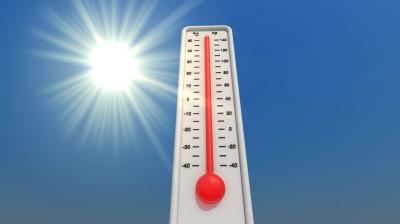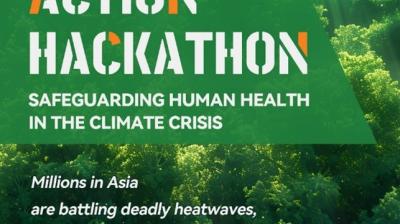UN Secretary-General issues call to action on extreme heat

The new initiative was launched in a week which saw the three warmest days recorded on Earth in recent history, according to one of the datasets that the WMO uses to monitor the climate.
On 22 July 2024, the daily global average temperature reached a new record high at 17.16°C in the ERA5 dataset that extends back to 1940 from the European Union’s Copernicus Climate Change Service (C3S). On 23 July, the preliminary value was 17.15°C. On 21 July, the temperature record was 17.09°C. All three days were warmer than the previous record of 17.08°C, set only last year on 6 July 2023.
“Earth is becoming hotter and more dangerous for everyone, everywhere,” said Mr Guterres.
“Billions of people are facing an extreme heat epidemic -- wilting under increasingly deadly heatwaves, with temperatures topping 50 degrees Celsius around the world. That’s 122 degrees Fahrenheit. And halfway to boiling,” said Mr Guterres.
“The World Meteorological Organization, the Intergovernmental Panel on Climate Change, and others have documented a rapid rise in the scale, intensity, frequency and duration of extreme-heat events,” he said.
Extreme heat is increasingly tearing through economies, widening inequalities, undermining the Sustainable Development Goals and killing people. It is estimated to kill almost half a million people a year, that’s about 30 times more than tropical cyclones, pointed out Mr Guterres.
The Call to Action on Extreme Heat says there must be a concerted effort to enhance international cooperation to address extreme heat in four critical areas:
- Caring for the vulnerable
- Protecting workers
- Boosting resilience of economies and societies using data and science
- Limiting temperature rise to 1.5°C by phasing out fossil fuels and scaling up investment in renewable energy.
It brings together the expertise and perspectives of ten specialized UN entities, including extensive and detailed input from experts at WMO and in the WMO-WHO Joint Office on Climate and Health. It is a first-of-its-kind joint report underscoring the diverse multi-sectoral impacts of extreme heat on human health, lives, and livelihoods.. National and local governments and businesses who are the most impacted around the world also supported the launch of the Call to Action.
“Our Earth is running an unprecedently high fever,” said WMO Secretary-General Celeste Saulo. “In addition to this week’s three new global daily temperature records, we have seen monthly temperature records for 13 successive months.”
“Widespread, intense and extended heatwaves have hit communities on every continent. At least ten countries have recorded temperatures of more than 50° C in more than one location this year. Many dozens of locations have seen daytime maximum temperatures of more than 40°C and dangerously high minimum overnight temperatures,” she said.
“The WMO community is working hard with many partners to strengthen heat-health action plans and early warnings to treat the symptoms of this fever. But, in addition, we need to tackle the root cause and urgently reduce greenhouse gas levels, which remain at record observed levels,” said Celeste Saulo.
The Call to Action stresses the need to establish and bolster heat early warning systems in line with the Early Warnings for All initiative, ensuring at-risk populations receive timely alerts that include information on protective actions to undertake and sources of assistance. Strengthening capacities of National Meteorological and Hydrological Services (NMHSs) would be critical, it says.
There is good news, it says, heat illness and deaths are preventable and many impacts can be minimized with targeted economic and social policies and concrete actions, including public awareness campaigns.
It cites recent estimates produced by the WHO and WMO that the global scale-up of heat health-warning systems for 57 countries alone has the potential to save an estimated 98,314 lives per year.
The need is urgent. Modelled estimates show that between 2000 and 2019, approximately 489,000 heat-related deaths occurred each year, with 45 per cent of these in Asia and 36 per cent in Europe. Worldwide, the official diagnosis and reporting of heat-related illness, injuries and deaths are recognized to be under-reported. The lack of uniform reporting standards makes the aggregation and comparison of nationally reported impact statistics challenging, it says.
Every one of these deaths is preventable.











